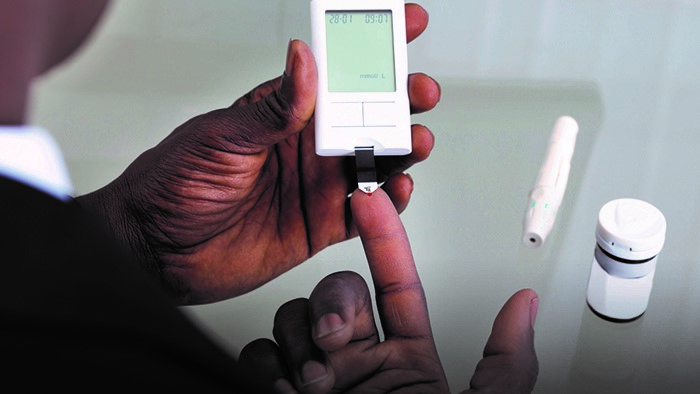Cigarette Smoking: A Risk Factor for Type 2 Diabetes
Cigarette smoking is the leading preventable cause of disease and death in the United States, killing more Americans per year than AIDS, alcohol, car accidents, homicide, suicide, illegal drugs, and fires combined.1,2 You may be aware that cigarettes increase a person’s risk of cancer, as well as diseases of the heart, lungs, and other organs. But you might not know that smoking is a risk factor for type 2 diabetes.
What is Type 2 Diabetes?
There are two primary types of diabetes:
Individuals with Type 1 diabetes do not produce insulin, which is a hormone produced by the pancreas for converting the glucose and carbohydrates that we eat into energy the body can use.3 Though it has been referred to in the past as “juvenile diabetes,” this type of diabetes can develop at any age, in any race, and is not related to body weight. Approximately 5 percent of diabetics have Type 1 diabetes; these individuals must use insulin therapy.4
Individuals with Type 2 diabetes have an abnormality in the way their bodies use insulin that causes blood sugar—or blood glucose—to be too high. People with Type 2 diabetes may have adequate or even elevated levels of insulin, but their bodies cannot use it properly.5 Type 2 diabetes—which accounts for more than 90 percent of all diabetes cases6—is a serious condition. In the past, Type 2 diabetes was thought to be a disease primarily seen in adults and acquired later in life. However, in the last 20 years, there has been an increase in the incidence of Type 2 diabetes in children and adolescents. The rise of Type 2 diabetes among youth has been linked to childhood obesity. In 2016, diabetes was the seventh leading cause of death in the United States.7
How Does Smoking Affect Type 2 Diabetes?
Center for Tobacco Products
Exchange Lab
Embed CTP content on your website for free. Through The Exchange Lab, when content is updated on our site, it will automatically update on your site as well.
There are several risk factors for type 2 diabetes, including age, ethnicity, obesity, family history, and cigarette smoking. According to the 2014 Surgeon General’s Report, there are several ways in which smoking may increase a person’s risk for developing type 2 diabetes.1,8 The chemicals in cigarettes cause harm to your body’s cells and can interfere with their normal function. This can cause inflammation throughout the body, which may decrease the effectiveness of insulin. Additionally, when chemicals from cigarette smoke meet oxygen in the body, this process can also cause cell damage, called oxidative stress. Both oxidative stress and inflammation may be related to an increased risk of diabetes.
Smokers are 30 to 40 percent more likely to develop type 2 diabetes than nonsmokers.8 Smoking can also make managing the disease and regulating insulin levels more difficult because high levels of nicotine can lessen the effectiveness of insulin, causing smokers to need more insulin to regulate blood sugar levels. Without proper management, diabetes can lead to health problems, including but not limited to:
- Heart disease;
- Blindness;
- Kidney failure; and
- Nerve and blood vessel damage to the feet and legs that can lead to amputation in severe cases.8,9
Smokers are also at greater risk of these complications from diabetes.
Reducing your Diabetes Risk: Cessation
Quitting cigarettes before you develop serious diseases like diabetes helps to safeguard your health. But if you have type 2 diabetes and you smoke, it is not too late to quit smoking. By doing so, it may be easier to manage your diabetes.
Quitting smoking is difficult, but possible, and it is beneficial at any age. Whether you have type 2 diabetes or not, the sooner you quit, the sooner your body can start to heal. In fact, studies have found insulin to become more effective at lowering blood sugar levels just eight weeks after you quit smoking.8 If you are looking to get your diabetes under control, or are simply looking to quit for other health reasons, talk to your doctor about your options. Telephone quit lines can provide real-time help from an expert, and online resources are also available to support you as you try to quit cigarettes for good.
FDA’s Plan to Help More Addicted Smokers Quit
To help reduce the incredible burden of smoking-related disease and death in the United States, FDA plans to enact a policy that would make it more difficult to become addicted to cigarettes in the first place, and easier to quit. In July 2017, FDA Commissioner Scott Gottlieb, M.D., announced the agency’s intention to lower nicotine levels in cigarettes to a minimally addictive or nonaddictive level. While this action would not remove cigarettes from the market, drastically reducing their addiction potential would likely help addicted adult smokers quit smoking altogether or transition to potentially less harmful products.
If you are at risk for type 2 diabetes, or living with the disease, it can be managed and treated, but smoking can put more stress on your body and complicate the illness, leading to potentially more severe outcomes. Talk to your doctor about the right quit method for you to help reduce your chances of developing type 2 diabetes or help you better manage the disease.
Additional Resources
- Facts about Diabetes from the National Institute of Diabetes and Digestive and Kidney Diseases
- Surgeon General’s Factsheet on Smoking and Diabetes
- Quit Resources from Smokefree.gov
- FDA's Comprehensive Plan for Tobacco and Nicotine Regulation
- Centers for Disease Control and Prevention - Tips From Former Smokers - Phone: 1-800-QUIT NOW (1-800-784-8669)
- En Espanol - Centers for Disease Control and Prevention - Tips From Former Smokers - Teléfono: 1-855-DÉJELO-YA (1-855-335-3569)
- Smokefree US
- En Espanol - Smokefree US
- National Institute of Diabetes and Digestive and Kidney Diseases
- En Espanol - National Institute of Diabetes and Digestive and Kidney Diseases
1. U.S. Department of Health and Human Services (USDHHS). The Health Consequences of Smoking: 50 Years of Progress. A Report of the Surgeon General. Atlanta, GA: U.S. Department of Health and Human Services, Centers for Disease Control and Prevention, National Center for Chronic Disease Prevention and Health Promotion, Office on Smoking and Health; 2014.
2, Murphy SL, Xu JQ, Kochanek KD. Deaths: Final data for 2010. National Vital Statistics Reports. 2013; 61(4):37-41.
3. National Institute of Diabetes and Digestive and Kidney Diseases. Type 2 Diabetes. https://www.niddk.nih.gov/health-information/diabetes/overview/what-is-diabetes/type-2-diabetes. Accessed February 18, 2019.
4. American Diabetes Association. Type 1 Diabetes. http://www.diabetes.org/diabetes-basics/type-1/. Accessed February 18, 2019.
5. American Diabetes Association. Type 2. http://www.diabetes.org/diabetes-basics/type-2/?loc=util-header_type2. Accessed February 18, 2019.
6. Centers for Disease Control and Prevention (CDC). National Diabetes Statistics Report. Atlanta, GA: U.S. Department of Health and Human Services, Centers for Disease Control and Prevention, National Center for Chronic Disease Prevention and Health Promotion, Division of Diabetes Translation; 2017. https://www.cdc.gov/diabetes/pdfs/data/statistics/national-diabetes-statistics-report.pdf. Accessed February 18, 2019.
7. Xu J, Murphy SL, Kochanek KD, et al. Deaths: Final Data for 2016. National Vital Statistics Reports. 2018; 67(5).
8. U.S. Department of Health and Human Services (USDHHS). Smoking and Diabetes Factsheet. Atlanta, GA: U.S. Department of Health and Human Services, Centers for Disease Control and Prevention, National Center for Chronic Disease Prevention and Health Promotion, Office on Smoking and Health; 2014. https://www.cdc.gov/tobacco/data_statistics/sgr/50th-anniversary/pdfs/fs_smoking_diabetes_508.pdf. Accessed February 18, 2019.
9. U.S. Department of Health and Human Services (USDHHS). Let’s Make the Next Generation Tobacco-Free: Your Guide to the 50th Anniversary Surgeon General’s Report on Smoking and Health (Consumer Booklet). Atlanta, GA: U.S. Department of Health and Human Services, Centers for Disease Control and Prevention, National Center for Chronic Disease Prevention and Health Promotion, Office on Smoking and Health; 2014.


